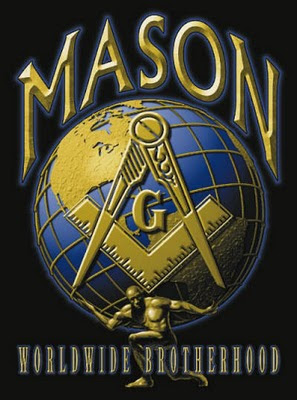
Regular Freemasonry has in its core ritual a formal obligation: to be quiet and peaceable citizens, true to the lawful government of the country in which they live, and not to countenance disloyalty or rebellion. A Freemason makes a further obligation, before being made Master of his Lodge, to pay a proper respect to the civil magistrates. The words may be varied across Grand Lodges, but the sense in the obligation taken is always there. Nevertheless, much of the political opposition to Freemasonry is based upon the idea that Masonry will foment (or sometimes prevent) rebellion.
In 1799 English Freemasonry almost came to a halt due to Parliamentary proclamation. In the wake of the French Revolution, the Unlawful Societies Act, 1799 banned any meetings of groups that required their members to take an oath or obligation.The Grand Masters of both the Moderns and the Antients Grand Lodges called on the Prime Minister William Pitt (who was not a Freemason) and explained to him that Freemasonry was a supporter of the law and lawfully constituted authority and was much involved in charitable work. As a result Freemasonry was specifically exempted from the terms of the Act, provided that each Private Lodge's Secretary placed with the local "Clerk of the Peace" a list of the members of his Lodge once a year.This continued until 1967 when the obligation of the provision was rescinded by Parliament.
Freemasonry in the United States faced political pressure following the disappearance of William Morgan in 1826. Reports of the "Morgan Affair", together with opposition to Jacksonian democracy (Andrew Jackson was a prominent Mason) helped fuel an Anti-Masonic movement, culminating in the formation of a short lived Anti-Masonic Party which fielded candidates for the Presidential elections of 1828 and 1832.
In Italy, Freemasonry has become linked to a scandal concerning the Propaganda Due Lodge (aka P2). This Lodge was Chartered by the Grande Oriente d'Italia in 1877, as a Lodge for visiting Masons unable to attend their own lodges. Under Licio Gelli’s leadership, in the late 1970s, the P2 Lodge became involved in the financial scandals that nearly bankrupted the Vatican Bank. However, by this time the lodge was operating independently and irregularly; as the Grand Orient had revoked its charter in 1976. By 1982 the scandal became public knowledge and Gelli was formally expelled from Freemasonry.
Conspiracy theorists have long associated Freemasonry with the New World Order and the Illuminati, and state that Freemasonry as an organisation is either bent on world domination or already secretly in control of world politics. Historically, Freemasonry has attracted criticism – and suppression – from both the politically extreme right (e.g. Nazi Germany) and the extreme left (e.g. the former Communist states in Eastern Europe).[65] The Fraternity has encountered both applause for supposedly founding, and opposition for supposedly thwarting, liberal democracy (such as the United States of America).

Even in modern democracies, Freemasonry is sometimes viewed with distrust.In the UK, Masons working in the justice system, such as judges and police officers, were from 1999 to 2009 required to disclose their membership.While a parliamentary inquiry found that there has been no evidence of wrongdoing, it was felt that any potential loyalties Masons might have, based on their vows to support fellow Masons, should be transparent to the public.[86][87][88] The policy of requiring a declaration of masonic membership of applicants for judicial office (judges and magistrates) was ended in 2009 by Justice Secretary Jack Straw, (who had initiated the requirement in the 1990s). Straw stated that the rule was considered disproportionate, since no impropriety or malpractice had been shown as a result of judges being Freemasons.The rescinding of the rule did not change the disclosure requirements for Police officers.
Freemasonry is both successful and controversial in France; membership is rising, but reporting in the popular media is often negative.
In some countries anti-Masonry is often related to anti-Semitism and anti-Zionism. For example, In 1980, the Iraqi legal and penal code was changed by Saddam Hussein's ruling Ba'ath Party, making it a felony to "promote or acclaim Zionist principles, including Freemasonry, or who associate [themselves] with Zionist organisations. Professor Andrew Prescott, of the University of Sheffield, writes: "Since at least the time of the Protocols of the Elders of Zion, anti-semitism has gone hand in hand with anti-masonry, so it is not surprising that allegations that 11 September was a Zionist plot have been accompanied by suggestions that the attacks were inspired by a masonic world order.



































 onry admits both men and women, but it is held to be irregular because it admits women. The systematic admission of women into International Co-Freemasonry began in France in 1882. In more recent times, women have created and maintained separate Lodges, working the same rituals as the all male regular lodges. These Female Masons have founded lodges around the world, and these Lodges continue to gain membership.
onry admits both men and women, but it is held to be irregular because it admits women. The systematic admission of women into International Co-Freemasonry began in France in 1882. In more recent times, women have created and maintained separate Lodges, working the same rituals as the all male regular lodges. These Female Masons have founded lodges around the world, and these Lodges continue to gain membership.


